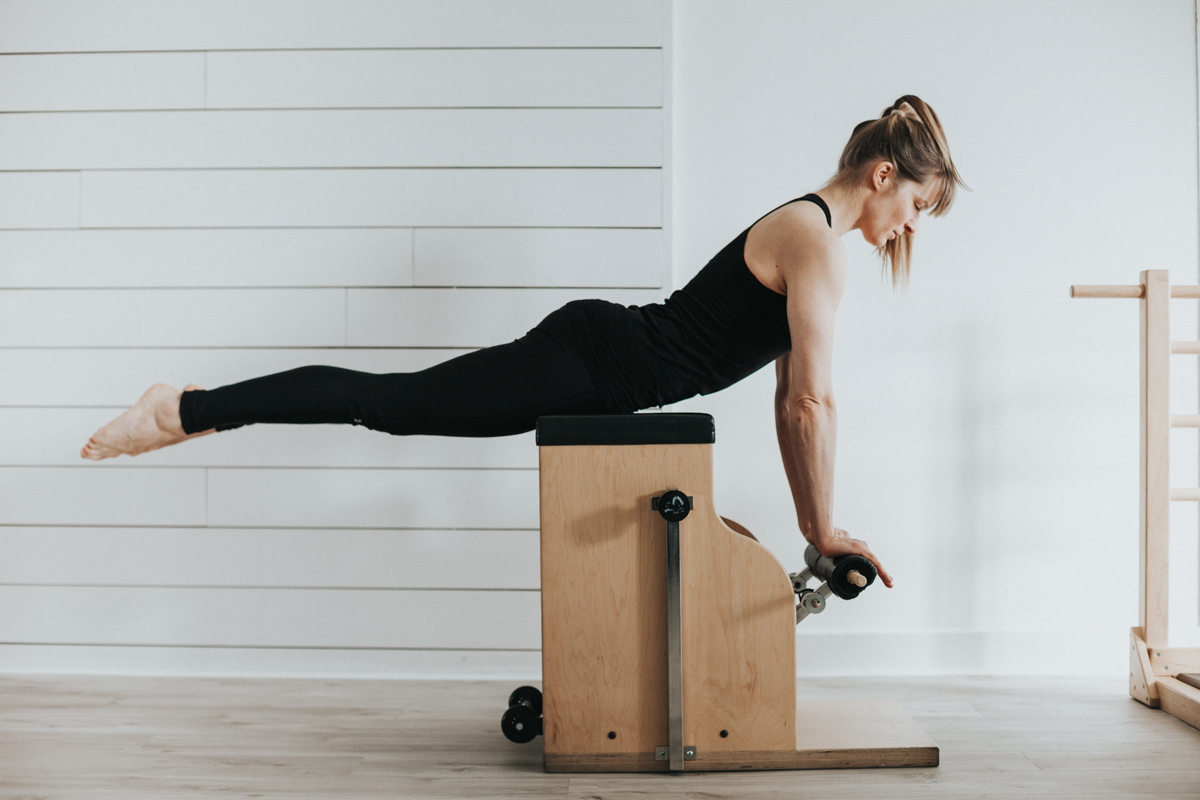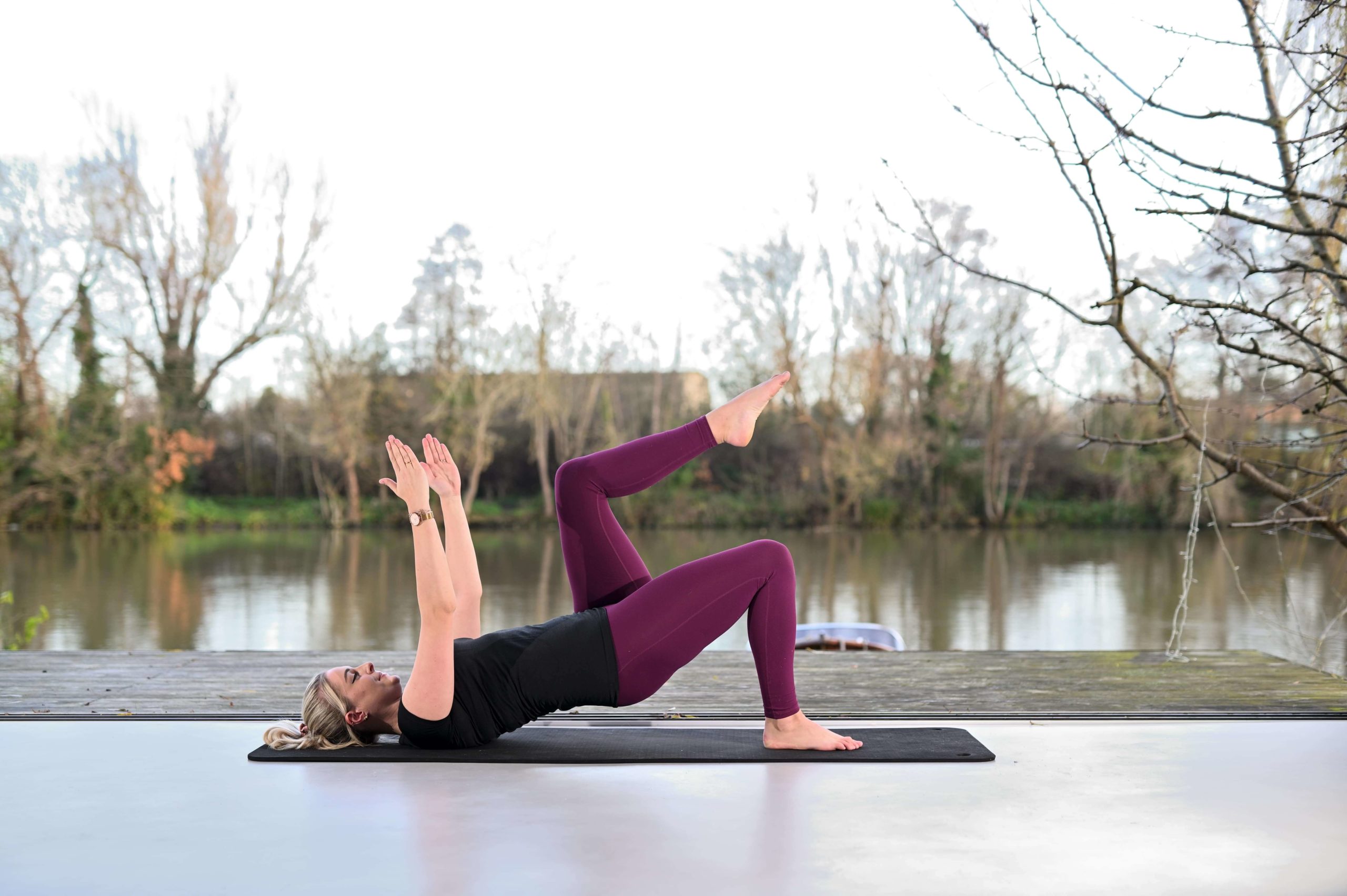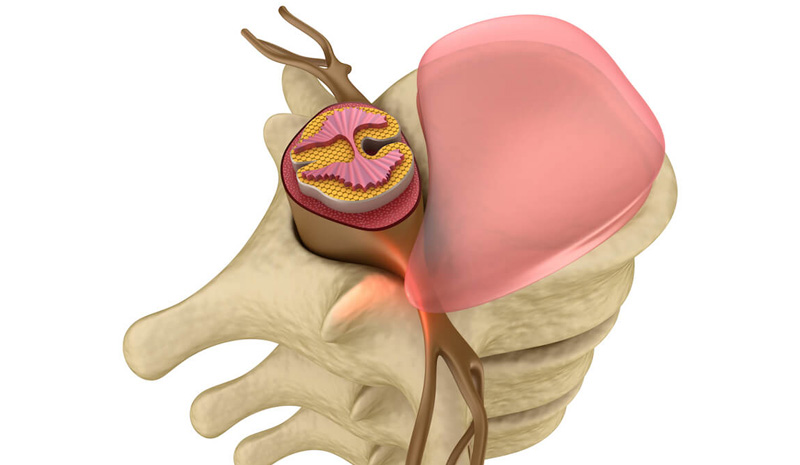At Complete Pilates, we use the full studio equipment in our classes and 1-2-1’s. This means that a Pilates session with us will usually include exercises on the barrel, reformer, trapeze table and the Pilates chair.
Why do we favour equipment Pilates over mat Pilates?
Well, we believe that Pilates on the machines is the most effective and efficient way to experience the Pilates method.
Having said that, we also recognise that the Pilates machines can look a bit strange – perhaps even downright scary – to people new to this method of exercising, and this can be a little off-putting.
So, to help you get to grips with the Pilates machines, we’ve decided to publish a series of posts focusing on the different pieces of equipment. Below is the second article in our series on the Pilates equipment. This week we focus on the brilliant (but often underrated) Pilates chair.
What is the Pilates chair?
Like the reformer, the Pilates chair or “wunda” chair is another of the original pieces of equipment first engineered by Joseph Pilates.
The first chair was designed by Joseph to convert quickly and easily into an armchair. Hence its name. It was also designed to fit comfortably into small New York apartments. Which is why it is the most compact piece of Pilates equipment.
Up until recently, the chair was considered a niche piece of exercise equipment. It was only known to Pilates devotees. Now, however, there are whole classes devoted to it. Slowly but surely it is making its way into mainstream fitness.
Main features of the Pilates chair
The chair is essentially a box (usually made of wood) with a padded seat on top and a pedal attached to one side of the box by springs. These springs allow for the tension of the pedal to be adjusted and are used to make exercises easier or more difficult.
Depending on the model of chair, the pedal is either in one piece or split down the middle. A split pedal makes the equipment more versatile and supports rotation-type movements.
Two detachable handles slot in either side of the box. These can be used to make the chair either a more supportive or a more challenging piece of equipment for the user.
How does it work?
The chair is great for standing or seated work.
It can also work for exercises that are performed on both your front and back, like the spine extension movement called “swan.”
Because of the small surface area, chair exercises can be pretty difficult. The chair is also compact and can easily be pushed up against the trapeze table to make exercises such as “swan” more achievable.
The Pilates chair allows for more creativity than some of the other machines. It can be used from positions both in front of the pedal or from seated positions with the pedal behind you.
What are the benefits of the Pilates chair?
The chair is great for injury rehab
The Pilates chair is a particularly useful piece of apparatus. It provides the perfect environment for people to practise movements in standing. This makes the chair a very functional piece of equipment.
Because of this, Pilates instructors can use the chair to progress a client from basic exercises to more integrated standing movements. This means that once someone has mastered an exercise like reformer footwork (which is basically a squat performed lying down) they can then attempt a more advanced standing version of footwork using the chair’s pedals.
And yet, even though exercises on the chair are generally more challenging than the ones performed lying on a reformer, certain design features mean that this doesn’t always have to be the case. The chair’s handle design, for example, allows the chair to be made more supportive for beginners or people with injuries.
The chair can enhance sports performance
Although the chair is beneficial for people with injuries, rehab is not its only function.
In fact, in Pilates circles the chair is known to be the most challenging piece of equipment. It is very effective for building arm and leg strength. For this reason, the chair can be used to improve sports performance in footballers, skiers and runners. It is also great for supporting sports that require upper body strength and mobility, such as tennis and golf.
Experienced Pilates practitioners can also use the chair for more acrobatic movements. Push ups using the handles is an example of an advanced exercise that can be performed on this piece of equipment.

Chair Pilates Exercises
Swan
Swan on the chair takes a challenging backbend exercise and makes it much easier. The same exercise on the mat requires lots of upper body strength and stability, as well as a lot of flexibility in the spine. On the Pilates chair the pedal gently assists you up into the movement, so you don’t have to use your upper body strength, or need as much flexibility. On a chair with a split pedal, you can add rotation to your movement, making it even better for improving spinal mobility.
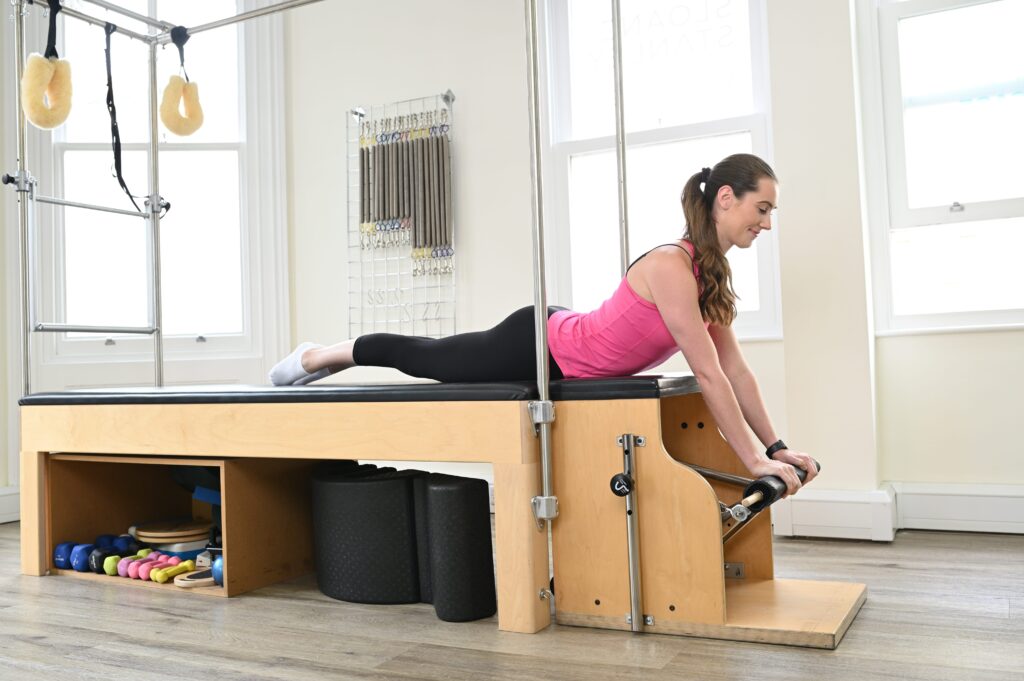
Mermaid
The original Mermaid exercise is performed on the floor in what we call the ‘Z sit’ position. The Z sit requires a lot of mobility in the hips and knees and also requires you to be able to get down onto the floor. Mermaid on the chair is great for those who cannot get down onto the floor, or with stiff or injured hips and knees. In addition, performing this lovely side bend on the chair enables you to bend through a greater range of motion, since your supporting hand can be lower than the level you are sitting at.
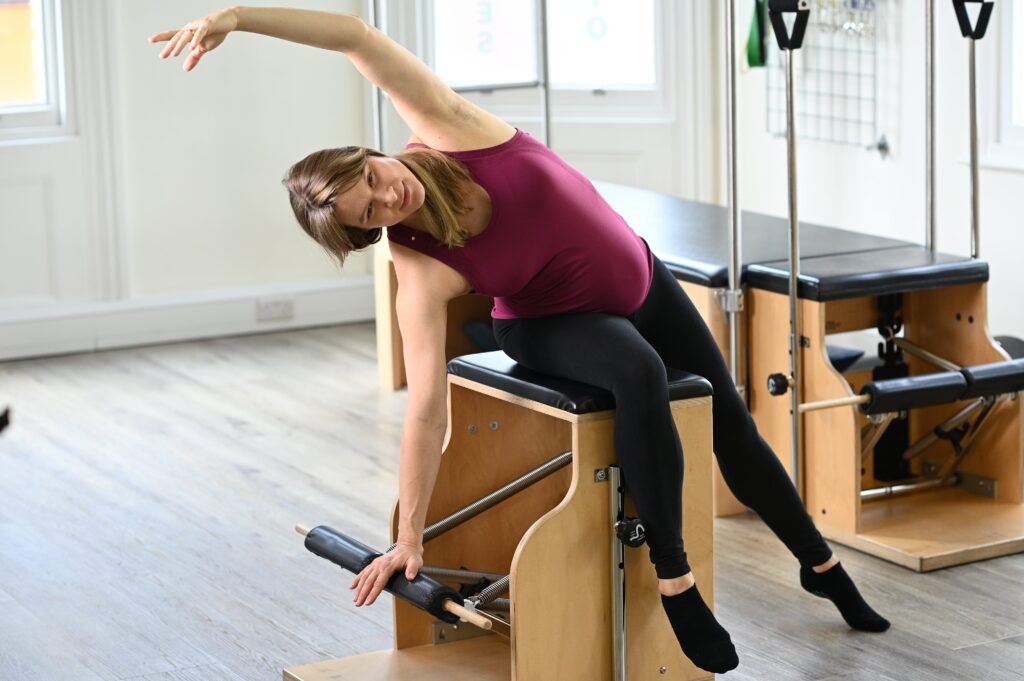
Kneeling cat
The kneeling cat is an advanced exercise. It requires great body awareness and control to avoid losing balance whilst doing it. It is great for working the muscles at the top of the shoulders, which often get tight when they are not active enough, and it requires abdominal strength to control the pedal as you return from an inverted to an upright position.
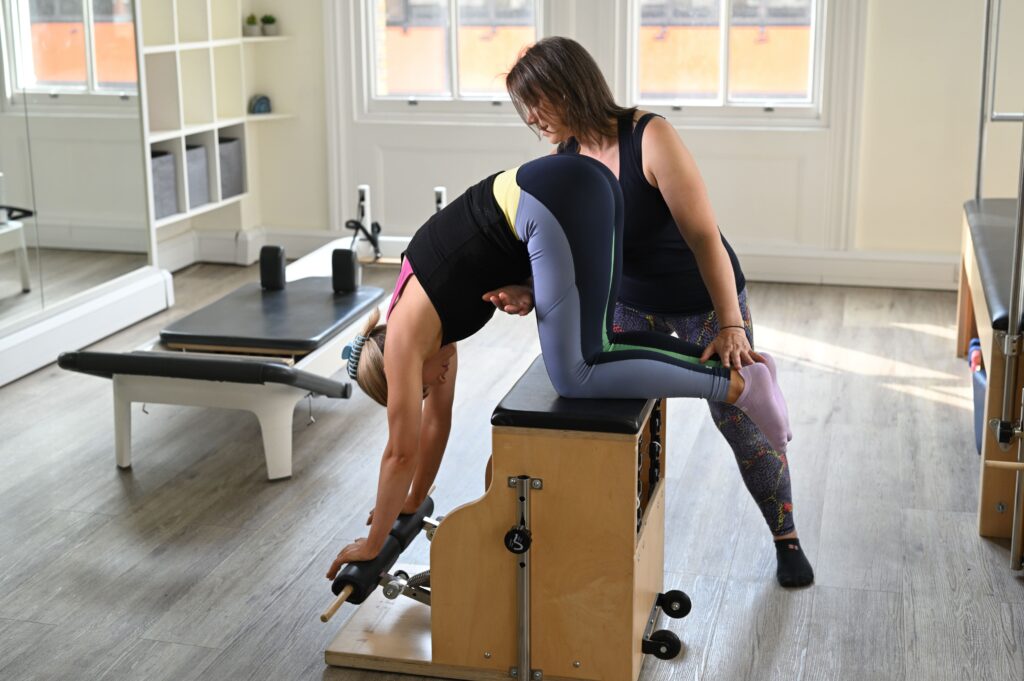
Frog facing out & Triceps Press
Sitting on the floor in front of the chair, you can warm up the back of your with a triceps press. Not only that, but maintaining the position of your body perfectly straight challenges your core as well. A progression of the triceps press is ‘frog facing out’ which is a real challenge for the upper body. This is a variation of a triceps dip, which starts sitting on the seat of the chair. This triceps dip is slightly assistive due to the support from the pedal.

The Teaser is a classic mat exercise which can be made even more challenging on the Chair. Having the arms behind you instead of overhead, makes it more difficult to use your arms to lead the movement. Good body awareness is required to maintain the height of the pedal. Great balance is needed to maintain the position on the chair, and finally, the double leg lift is a strong abdominal challenge.
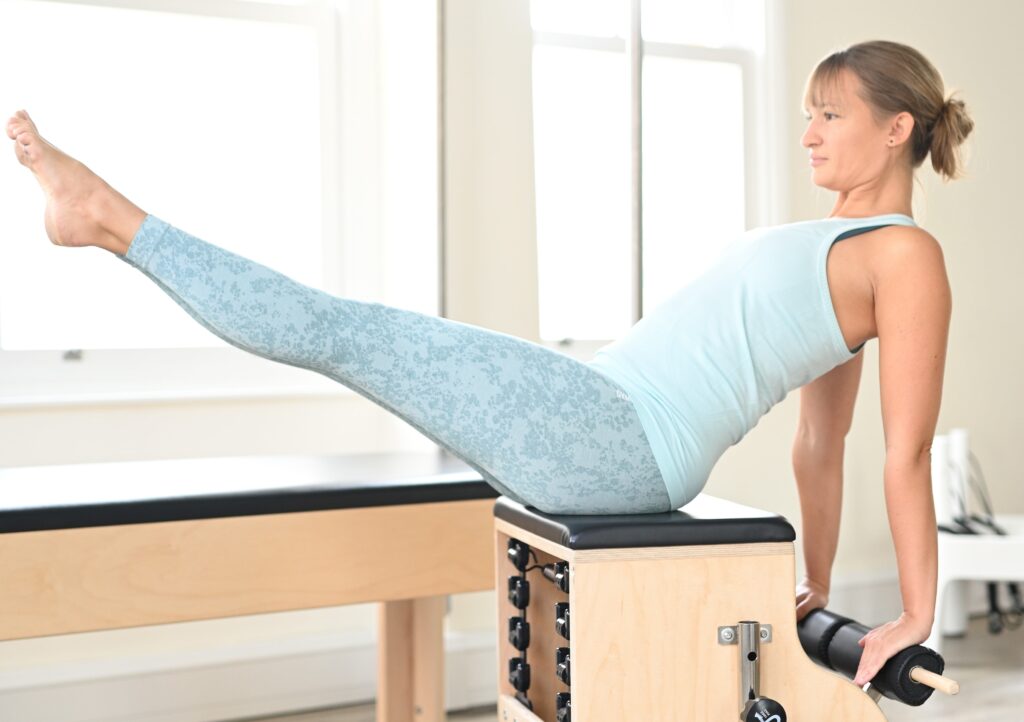
Pilates chair VS reformer – which is best?
Are you wondering which piece of Pilates equipment you should try next? Should you try the Pilates chair, or would the Pilates reformer be best? The answer is – it depends!
If you are looking to buy a piece of Pilates equipment for your home and space is at a premium then the Pilates chair wins, hands down.
If you struggle with lying flat – for example, because of dizziness, difficulty getting onto a low surface or because you are pregnant – then the chair is ideal, because so many of the exercises are performed sitting, or standing. The height of the seat is much higher than the Reformer, so it is easier to get onto the chair.
If you want to be able to exercise lying down, perhaps because of an injury or disability, then the Reformer can offer more in the way of exercise for you. The Reformer may offer more in the way of beginner exercises as well, whereas some of the chair exercise repertoire can be very demanding.
Try the Pilates chair
Interested in trying the Pilates chair? Then why not sign up for a 1-2-1 session or studio class with Complete Pilates. Try Pilates in Angel or any of our studios. If central London is more convenient our Pilates studios in Chelsea or our Pilates studio in City offer a highly tailored approach to your Pilates training, whether your goal is to manage a health condition, rehabilitate from an injury or to improve your strength and fitness.
Want to learn more about the equipment? Then check back next week for our post on the Pilates trapeze table.
These blogs are designed to give information to everyone, however, it is important to remember that everyone is different! If you have not seen one of our therapists and have any questions about injuries, what you have read or whether this may be useful to you, please just ask. We are more than happy to help anyone and point you in the right direction. Our biggest belief is that education is key. The more you understand about your injury, illness and movement, the more you are likely to improve.


